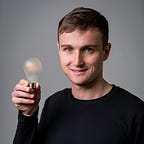Simple Light Exposure Tips for Fall & Winter
The end of daylight saving time each fall is bittersweet. We gain a precious extra hour of sleep the first weekend, but the sun sets extremely early for months thereafter.
With the clock falling backward and days continually getting shorter, access to natural light becomes a major concern. Seasonal affective disorder (SAD), a condition with symptoms ranging from sleep loss to depression, is largely influenced by the lack of adequate daylight in the winter. A more mild form of SAD is known as the winter blues.
I recently published a longer article on lighting strategies for SAD — it’s worth a read for those who react severely to limited winter daylight. For the time-poor, here are a few ideas to get yourself adjusted during the time change and beyond.
Shift your schedule
As a night owl, I‘m already working with a shorter-than-average day length. Remove daylight saving time, and it’s easy for anyone — even early birds — to miss the limited opportunity for natural light.
You may consider adapting your schedule to be an hour (or more) ahead of what it usually is. This will allow you to maximize your daylight exposure, even if it means shifting some evening activities to the morning and cutting off work at an earlier hour.
To aid your transition to a new schedule, pretend you’re traveling to a time zone up to a few hours ahead. For example, if you live on the west coast, pick a city like Chicago or New York. Download the free app Timeshifter and set a flight to your target destination. Follow the app’s guidelines on light exposure, caffeine intake, and sleep timing for the next few days until you’re fully adjusted.
Go outside in the morning
Sometimes even the teacher becomes the student. I recently found myself waking up at 9:30, 10, even 11 AM. I didn’t mind this per se, but my schedule was becoming increasingly incompatible with the rest of the world. I realized I was drifting later and later because I did not get outdoor light exposure before noon.
Our body clocks tend to run longer than 24 hours without proper light stimuli. Bright morning light “advances” the body clock, helping us go to sleep and wake up earlier, while afternoon light can “delay” the body clock, forcing us into a later schedule. My first walk in the afternoon was delaying my body clock.
Now I try to get outside for 10–20 minutes within the first half hour of waking, with several additional walks during daylight hours. This keeps me from drifting too late, and the science says it should work for you, too.
Use SAD therapy lights
Sometimes it’s so cold, you just don’t want to go outside. When natural light exposure is hard to come by, use SAD therapy lights instead. There are plenty of good models to choose from on Amazon*.
For 10–30 minutes each morning, sit near a SAD therapy light to stimulate the body clock. You may wish to repeat this in the early afternoon. Two recommendations: don’t look directly at the light, and move away from the light or turn it off if you experience any discomfort.
Reduce evening blue light exposure
Blue light — produced by phones, computers, and lighting — can interrupt sleep when used at night. This is especially true in the winter, when we don’t get enough of a daytime blue light stimulus from the sun. Our body clocks are tricked into thinking it’s daytime, even when it’s not.
I’ve gone deep on blue light science, but the best solutions to nighttime blue light are quite simple:
Phones and computers
To reduce nighttime blue light produced by your phone and computer, dim the display to a comfortable level and enable a blue light filter app like f.lux or Night Shift. This will make your screen appear more orange, which may have the additional benefit of reducing eyestrain.
Lighting
To reduce blue light in your home, use Bedtime Bulb as you wind down at the end of the day. It provides the perfect light for evening activities — not too bright and not too dim — and it significantly reduces your exposure to sleep-interrupting blue light.
Order your Bedtime Bulb today from Amazon in the U.S.* or Canada.
Recap
These four simple light exposure strategies could help mitigate the winter blues:
- Shifting your schedule
- Getting morning light exposure
- Using SAD therapy lights in place of natural light
- Reducing nighttime blue light from your devices and lighting
I created Bedtime Bulb because I wasn’t satisfied with existing solutions for nighttime blue light in the home. Learn more about Bedtime Bulb and buy on Amazon in the U.S.* or Canada.
About the author
Greg Yeutter’s first word was “light.” For the last eight years, he’s been obsessed with light’s effects on health. Greg launched Bedtime Bulb as a simple, affordable solution to address unhealthy blue light at night.
*We may make a small commission from purchases made after clicking affiliate links. Learn more.
